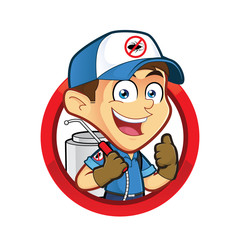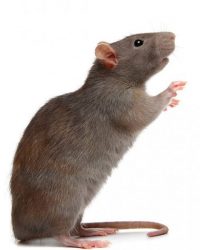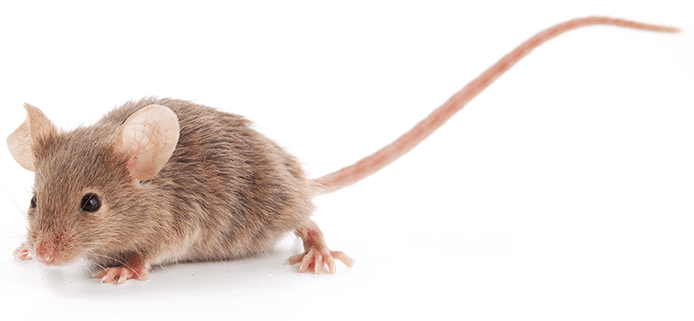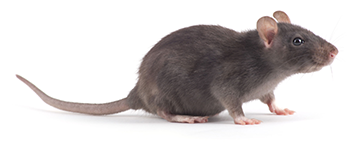Rats are prolific and destructive animals that infest homes, farms, gardens, and fields. Their resilient nature allows them to thrive in a wide variety of climates from arid deserts to humid jungles. Rats often eat food meant for humans or contaminate it with their filthy fur by trampling on the goods as they scamper across grocery store floors looking for scraps left behind by careless customers who don’t want what’s already been paid for.
Rodents are the most dangerous living creatures on earth. They contaminate and destroy 1/3 of all food in existence, they carry many deadly diseases that contribute to a quarter of “undetermined” structure fires, and their control is one of the top three reasons why life expectancy has been steadily increasing over time.
What threats can mice or rats pose to me or my home?
Mice and rats are public health pests, carrying many diseases. From Murine Typhus to Rickettsialpox, there is a lot of risk associated with rodents; even if they don’t bite you or chew your wires as mice do in some rare cases for example. They can spread Salmonella through their urine and feces on surfaces around the house which could lead to food-borne illnesses like Lymphocytic Choriomeningitis – this one carried by rat bites too! Rodents gnaw just because it’s what helps them wear down their teeth throughout life but that means other things might get chewed up too: wires from fires being started due to rodent chewing for instance.
Check out other effective pest control services such as our termite treatment Palm Desert plans to ensure that your home is always free from infestation.
Eliminate rodent invasion through rodent exclusion services:
Rodents can be a problem for the average home. It is important to remember that they are not just looking to eat your food or ruin your furniture, but also seeking shelter from predators and extreme weather conditions. If you think rodents could invade your own property then it might be time to consider getting rodent exclusion service through “rodent proofing”. A professional will identify potential entry points of rodents into our homes and eliminate their access completely by sealing off all possible entrances with steel mesh screening or other appropriate materials so we never have an issue again!
Rodent Proofing – How it Works
‘On the Fly Rodent Control has been performing rodent proofing services for over 10 years. Its our goal to not only identify entry points but also seal any gaps found with a safe, non-toxic material that will last indefinitely.’

Rats and rodents can take over a home or any portion of it. The first step in rat proofing is to inspect the area, looking for tell-tale signs that they have invaded your space, or could invade it. These include droppings, chewed up materials such as wood and insulation around holes where rats may be entering from outside; nesting material like leaves piled near potential entry points are also suspect–especially if there’s an unusual amount of them! You will likely hear sounds coming through walls too during this inspection process: scratching noises indicate mice infestations while squeaking might mean you’ve got bats hanging out nearby.”
Rats, mice and other rodents are wily creatures that can fit through very small openings or even scale walls. It often takes a professional eye -someone with years of experience- to identify all entry points these nasty critters could be using into your home. Luckily there is On the Fly Pest Control! They’re trained professionals who will inspect every inch of your house for any possible threats so you don’t have to worry about being overrun by pests again
Once a weak point has been identified, we work to seal it off. We do all this by closing up any holes and reinforcing defenses that are coming down in your home. Often the insulation is hiding these points of entry for rats or mice and our sealing process may require you removing some of it while also repairing what’s left so there aren’t any weaknesses at all!
(optional but recommended)
With a rat or mouse infestation, there are many gross and unhealthy things that can come into contact with your family. You may be wondering how to keep you from these dangers in the future? An attic cleanup is an excellent way of removing droppings as well as any odors they might have left behind. This will ensure that new rodents won’t bother coming around because their senses tell them it doesn’t smell right! If leaving this job up to professionals sounds like what you need, give us a call today at (insert company name)!
Rats are rodents that have a lot of free time on their paws, so be sure to check your yard for signs. If you see any droppings or chew marks along the perimeter of your home – it’s likely rats! When infested with these pests, there is usually no escape as they will gradually move indoors and spread throughout the house from one room to another in search of food scraps left out by careless humans. They also breed quickly which makes them difficult pest control but if caught early enough can be solved more easily than anticipated; start rat prevention before numbers get too high and traps needn’t always require bait.
Rats are one of the most persistent and nuisance pests. If you find rat droppings around your dog or cat dishes, hear noises coming from the attic just after dusk, have found remnants of rat nests when dismantling a firewood stack; if rats eat fruit/nuts that fall in or near trees within your yard and see burrows among plants as well as damaged vegetables while working on an organic garden – then there is no need to worry! Rats love warm weather for traveling along utility lines at tops fences shortly before dark. To get rid these omnivorous creatures we recommend using traps baited with peanut butter (or other high-protein food), placed inside walls where rodents may be scaling up to escape heat during summer months
People don’t often see rats, but signs of their presence are easy to detect. In California, the most troublesome rats are two introduced species, the Roof Rat and the Norway Rat. It’s important to know which species of rat is present in order to choose effective control strategies. While both rodents have similarities such as gnawing on wood and having large heads relative to body size; there are many distinctions that make it crucial for pest management professionals or homeowners alike identify what type they may be dealing with before beginning any extermination treatments – mouse infestations can easily lead into a full-blown rodent problem if left untreated due to a shared habitat preference for living spaces near food sources like homes kitchens where mice can usually be found.

Belly: white with gray under-fur
body weight: 7 t0 16 ounces
tail: shorter than body
head: muzzle blunt
ears: do not reach eyes
Norway rats, often called brown or sewer rats, are stocky burrowing rodents that are larger than roof rats. Their burrows can be found along building foundations and beneath rubbish piles. They live throughout the 48 contiguous states of America; while generally found at lower elevations they inhabit wherever people do as well.

Belly: gray
body weight: 1/2 to 1 ounce
tail: as long as body; up to 4 inches
head: pointed snout
ears:
moderately large
Those pesky little creatures that always seem to be in your house? The ones you can’t get rid of, no matter how hard you try. They’re the House Mouse – Mus musculus by scientific reasoning (although there are several other species), and they inhabit many homes all over the world due to their high adaptability. These rodents have excellent hearing, vision, smell and touch for a mouse’s size; this enables them not only with quick escape routes when danger approaches but also provides an extra sense of safety afforded specially from being able to feel vibrations through ground so sensitively as well as having good eyesight at night time or low light conditions where humans might struggle without assistance. What we don’t know about these mice is what they eat.

Belly: all white, all buff, or all gray
body weight: 5 to 10 ounces
tail: extends to snout
head: muzzle pointed
ears: can be pulled over eyes
Roof rats are cunning rodents that live in the warm climates of coastal regions. Unlike Norway rats, their tails are longer than their bodies and heads combined– a sign they can climb to great heights without fear for safety. Commonly found nesting above ground on shrubs, trees or ivy-covered areas near buildings, roof rat’s often invade homes searching for food while avoiding contact with humans who may be present there at any given time!